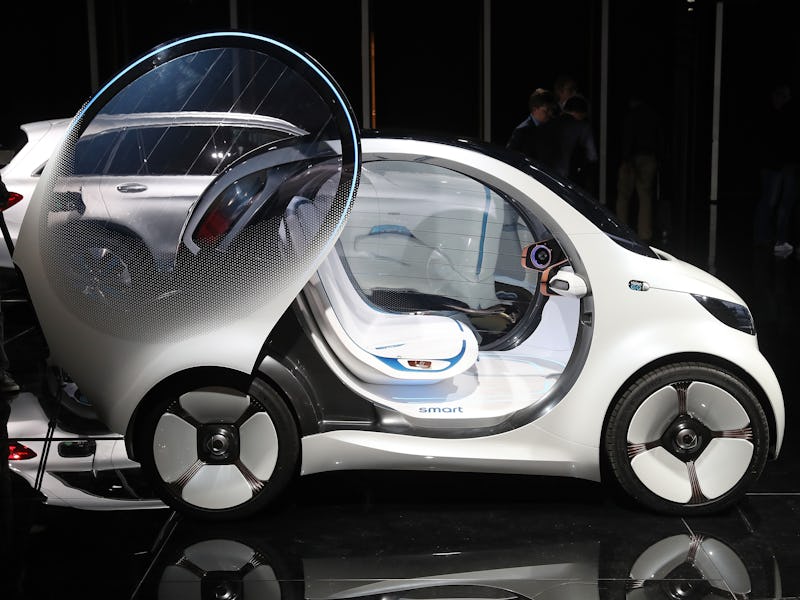Autonomous Cars Could Stop Vehicle-Ramming Terrorism
It'll take more than government policy to stop car attacks.

Tuesday’s attack in New York saw a man drive a pickup truck along a bike path in lower Manhattan, killing eight people and injuring about a dozen more. The attack has put the threat of these truck attacks back in the spotlight, raising the question of how they can be prevented.
Such attacks have been especially common in Europe and other places where guns are harder to obtain, making vehicles the most powerful weapons available. The future of preventing these tragedies may be in the hands of autonomous vehicles (AV) makers.
“Terrorist attacks like the one in New York are a good example of why we need AVs more quickly,” Caleb Watney, technology policy associate at the R Street Institute, tells Inverse.
Right now, any human with bad intentions can use their vehicle to run over pedestrians. This isn’t to say a self-driving car would make such crimes impossible, but it would take a lot more effort to do so, Watney argues.
According to the FBI, “vehicle-ramming offers terrorists with limited access to explosives or weapons an opportunity to conduct a homeland attack with minimal prior training or experience.” Throw in the fact cars aren’t regulated as tightly as guns — at least not in Europe — and attackers can use the car to get away or aid their escape, and it’s easy to see why a vehicle can be such a deadly weapon.
At the end of the day though, Watney says, it’s important to recognize the incentives for manufacturers is to sell innovative cars.
Aside from policy, the tech industry’s first and foremost responsibility is to deliver AVs to solve transit problems, Dr. Junfeng Jiao, the Director of the Urban Information Lab at the University of Texas, tells Inverse.
Today’s driverless cars are controlled by either computer or the “emergency” drive takeover system. To help prevent use for terrorism, manufacturers may end up deciding to forego a takeover or even a driving wheel option at all.
With cars long freely available to purchase at any dealership or lot, it’s hard for governments to go back and regulate who can and cannot buy them. So to overrule the buyer’s potentially maliciously intentions, autonomous vehicle makers will need to design a car with appropriate safety control.
“With the development of the technology, these tragedies may be taken into account by the makers such as Tesla and Google,” Jiao explains. Not to mention, incentives for makers to build safe AVs include avoiding PR nightmares if their cars are used in an attack. For example, makers may add sensors detecting oncoming objects, in which the system will know not to crash into humans and instead divert to a tree.
AVs will get smarter and smarter, Jiao says, and it’s up to governors to adapt their policies accordingly.
“This is a huge opportunity for the next generation to de-weaponize cars,” Jiao says.
“Someone who wants to harm others will eventually find another way,” but making it harder for them will at least decrease the number of these attacks.
If you liked this article, check out this video on five reasons to get excited about self-driving cars.